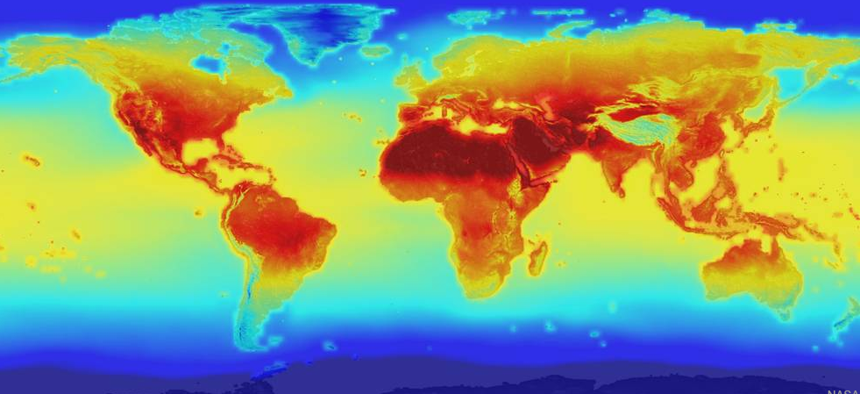NASA puts 150 years of climate projections in the public cloud

The massive dataset is the latest addition to OpenNEX, a partnership with Amazon to make climate data more broadly available.
The latest data from NASA on projected climate change may be a bit depressing, but the platform that makes it available is rather cool.
The space agency on June 9 released an 11-terabyte dataset that shows how global temperature and rainfall patterns could change through the year 2100, using 21 different climate models for the projections. The dataset covers 1950 to 2100, and provides daily estimates of maximum and minimum temperatures and precipitation over the entire globe, down to a resolution of 15.5 miles.
The dataset is freely available on OpenNEX -- a joint effort between the NASA Earth Exchange and Amazon Web Services.
NEX, based at the Ames Research Center in California, gives approved users a powerful collaboration and analytical platform that draws on NASA's supercomputing systems, Earth system modeling, workflow management and remote-sensing data. OpenNEX makes many of those same resources, along with introductory video lectures and online "virtual labs," available to the general public in the Amazon cloud. It is, NASA said in announcing the new dataset, "an extension of the NASA Earth Exchange in a public cloud-computing environment."
OpenNEX has also been used as a platform for "challenge" contests to encourage citizen scientists to put NASA's climate data to use.
“NASA is in the business of taking what we’ve learned about our planet from space and creating new products that help us all safeguard our future,” NASA chief scientist Ellen Stofan said in the annoncment. “With this new global dataset, people around the world have a valuable new tool to use in planning how to cope with a warming planet.”
The partnership with Amazon also reflects a growing need for agencies to find new ways to affordably share massive datasets. The National Oceanic and Atmospheric Administration, for example, has signed Cooperative Research and Development Agreements, or CRADAs, with Amazon Web Services, Google Cloud Platform, IBM, Microsoft and Open Cloud Consortium to get more of its climate data into the cloud at minimal cost to the agency.





